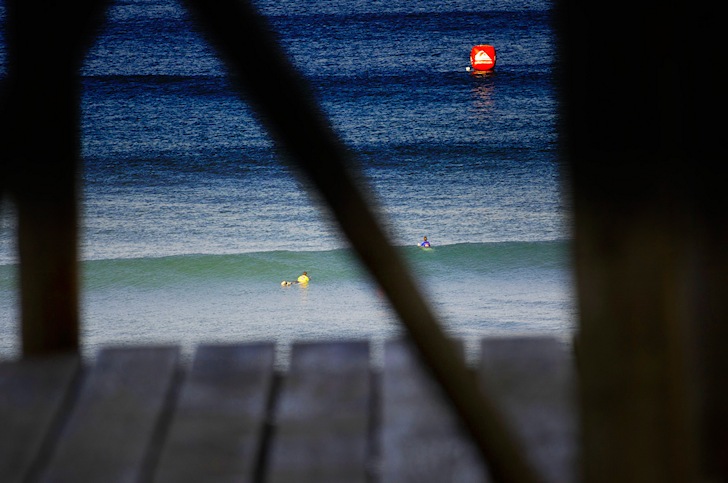Whether you're a free surfer or a competitive wave rider, knowing how to position your surfboard in the line-up is critical. Learn how to get more and better waves.
All surfers are looking for the perfect wave of the day. But being in the right spot at the right moment may not be possible due to the crowd factor.
Point breaks and reef breaks usually have an optimal and well-defined take-off zone. Beach breaks, on the other hand, can present shifting line-up markers due to constant alterations in the sandbars.
Lining up means being in the right spot on the wave peak.
According to Jim Kempton, there are four variables taken into consideration when you're choosing your own go-for-it square meter:
- Peak observation;
- Triangulation;
- Fear factor;
- Crowd;
Use Your Brain
When you arrive at the beach, take your time and watch how the waves are breaking. Register the slight shifts in the peaks, confirm the tide times, and get a first idea of where you'll be paddling out to.
In other words, observe the scene carefully before hitting the line-up.
Triangulation is a basic exercise where a surfer calculates the coordinates and distance from the line-up to the beach.
When in the take-off zone, they may fine-tune the optimum wave peak position by finding and recording reference points in their mind.
Jetties, higher dunes, buildings, and other relevant landmarks are all good choices.
Wave fear - not cymophobia - can also obviously affect our line-up decisions.
Bigger swells and steeper pyramid walls may deter you from deeper take-off points. Get your confidence levels rising by taking harder take-offs step by step.
Last but not least, you must consider the crowd factor.
Unfortunately, surf etiquette is not a universally accepted concept, so in a crowded line-up, you'll always have to manage snaking, unacceptable drop-ins, and the go-from-behind longboarders.
Mark your favorite take-off zone, sit off to one side, and when the time is right, paddle for your spot.
A lined-up surfer enjoys the best waves. Maintain a regular check and recheck routine of your peak coordinates while waiting for the next set.
